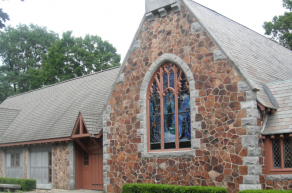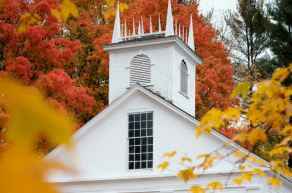
Back in 2016, Church of the Ascension in Lexington Park, MD and St. George’s Church in Valley Lee, MD – the two campuses of what is now Resurrection Parish in the Episcopal Diocese of Washington – were entering into a covenantal, yoked relationship. Fearing uncertainty or some measure of loss, one member said to another: “I know the plan: Ascension will become a community center, whereas St. George’s will be the church.” (I’ll bet you can tell which worshipping community that person attended.)
There was no plan that went into that amount of detail. And if there were such detail, that was not on the plan – keeping one building a church and making the other a community center.
Continue reading...

This is the second installment in our two-part series on church branding. In the first post, "How Effective Branding Can Transform Your Church," we explored the importance of building a strong brand and how it plays a crucial role in fostering growth, enhancing community engagement, and inspiring gifts to your church's endowment. You can find that post here. Now that we've established the "why" of branding, let's delve into the "how." This post provides seven practical strategies for building your church's brand, helping you create a cohesive, welcoming, and memorable experience for both current and prospective members.
Continue reading...

There’s my bias. I believe The Episcopal Church has too many buildings. More than 6,000+ congregations and more than 100 dioceses scattered throughout the United States and other countries with churches, chapels, parish halls, parish houses, vicarages, rectories, other houses, diocesan centers, retreat houses, camps and conference centers, other real estate holdings and churchyards and stuff … the list goes on. It’s a lot.
Buildings consume a lot of attention and maintenance and money. We know that.
What’s more, we built a lot of our buildings in the height, or post-height of the Baby Boom – using the inexpensive building materials and processes that were in favor in the 1960s and 70s. Those materials and processes were then, and certainly are now, unsustainable both environmentally but also financially. Today, they pose ongoing challenges – health challenges and financial challenges. What else would you expect from scores of drafty, inexpensively built buildings with gas-guzzling HVAC systems?
Continue reading...

Church of the Ascension in Lexington Park, Maryland owned a house next door to the church. It was never the rectory. It was given to the church in 2000. For many years, Ascension rented it to a local transitional living shelter. The congregation, as landlords, managed and maintained the property as well as they could – but it wasn’t a well-built home in the first place, having been thrown up fairly inexpensively along with all the other homes in that post-WW2 neighborhood in the late 1940s. Having a constant turnover of residents as well as a shelter serving as tenant also posed ongoing challenges, but the church was serving the needs of the neighborhood. Sure, there were annual property tax payments and maintenance costs but, still, the $1,700 rent check each month was nice for the congregation’s cash flow.
Continue reading...

This year, the Episcopal Church Foundation (ECF) is celebrating its 75th Anniversary. We were founded by the Rt. Rev. Henry Knox Sherrill in 1949 as an independent, lay-led organization charged with “having great convictions about great things.” Bishop Sherrill served as Presiding Bishop during the post-war boom in The Episcopal Church and American society in general. Sherrill was clearly ahead of his time in creating an organization with a board of directors that was entirely lay, and we have continued that tradition and practice to this very day. A lay-led board is more than optics or window dressing, however. Lay empowerment has been part of ECF’s DNA since our inception.
Continue reading...

What is ABCD? Asset Based Community Development is a way of looking at the people and organizations in your particular community by acknowledging and highlighting their gifts, strengths, and relationships.
When you see the community around you through an asset-based lens, you see the God-given opportunities for connection, mission, and relationship that can be overlooked by focusing on the deficits.
A critical step in ABCD is building an asset map of your surrounding community. Taking a deep look at the different kinds of people, organizations, and physical spaces in your neighborhood will help you identify potential mission fields or ministry partners.
Continue reading...

When you think of Coca-Cola, McDonald’s, or Nike, what images, emotions, and even tastes come to mind? Perhaps it's the unmistakable shape of a Coke bottle, the silhouette of the golden arches, or the iconic "Just Do It" slogan from Nike. These companies have mastered the art of branding, transforming their logos and names into memorable symbols of their products and values. But branding isn't just for corporations. It's equally important for institutions with deeper, more personal missions—like churches. Faith communities are vying for attention and relevance in the lives of their congregants and their broader communities, and understanding and honing your church's brand is key. Just as a strong brand can evoke trust and loyalty among consumers, a well-defined and communicated church brand can foster a deeper connection with current members, attract new ones, and extend your reach and impact within your community.
Continue reading...







